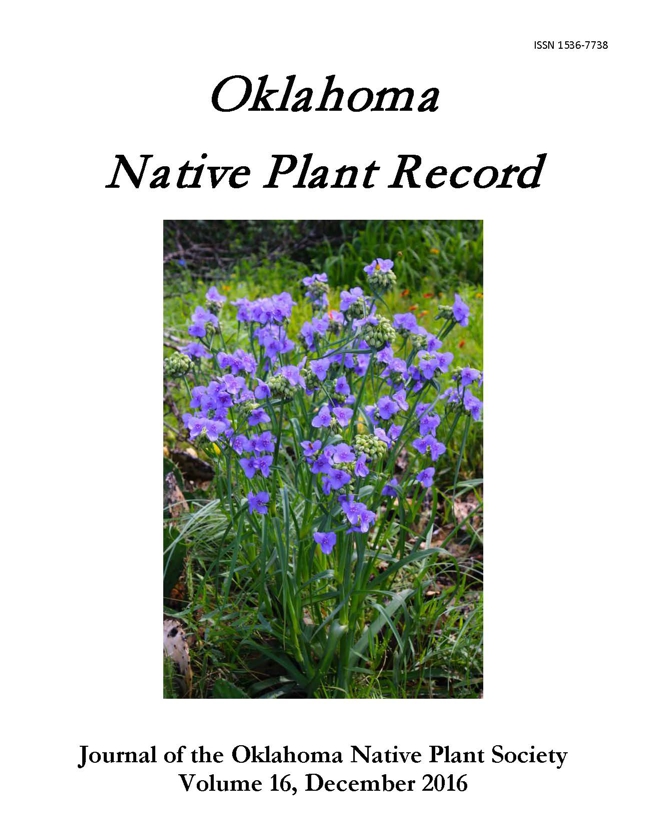The Structure of the Gynostegium, Breeding System, and Pollination Ecology of Spider Milkweed, Asclepias viridis Walter (Apocynaceae)
Main Article Content
Abstract
Reproductive structures, flowering phenology, breeding system, and potential pollinators were described in two populations of Asclepias viridis Walter in Oklahoma in 1997 and 1998. Scanning electron microscopy was used to locate the stigmatic surfaces of the gynostegium, and a series of pollination treatments was performed including open-pollination, supplemental pollination, self-pollination, and within- and between-population cross-pollination. Flower visitors, their visitation rates, and numbers of pollinaria carried were recorded. Pollinia were inserted in four ways to determine which type of insertion results in pollen germination, and flowers were collected to determine how pollinia were inserted by insects. The stigmatic surfaces of A. viridis are located at the fusion point of the two styles at the base of the gynostegium. Self-pollinations produced no mature follicles, revealing self-incompatibility. In addition to genetic barriers, the low rate of natural fruit-set (1.87% in 1997 and 1.39% in 1998) is due to follicle abortion and predation of flowers and follicles. Supplemental pollination did not significantly increase fruit and seed set. Fruit-set from hand cross-pollinations at one site, but not the other, revealed a greater crossability between populations than within. A. viridis flowered from early May to late June, with a peak in late May. The mean number of flowers per inflorescence was 34.1, and the mean flowering span per inflorescence was 10.6 days. Over 20 families of insects, including those within the orders Hymenoptera, Lepidoptera, Coleoptera, and Hemiptera, visited flowers. Of the hymenopterans, solitary wasps, large carpenter bees, digger bees, and bumblebees carried pollinaria. Hymenopterans contributed the majority of visitations, and bumblebees (Bombus spp.; Apidae) were the most important pollinators based on numbers of pollinaria carried and frequency of visitation. The highest percentage of mature follicles was obtained when pollinia were inserted with the convex edge toward the stigmatic surface; natural pollinators almost always insert pollinia in this manner.
Article Details

This work is licensed under a Creative Commons Attribution-NonCommercial-ShareAlike 4.0 International License.
Articles (c) The Authors
Journal compilation (c) Oklahoma Native Plant Society
Except where otherwise noted, this work is licensed under a Creative Commons Attribution-NonCommercial-ShareAlike4.0 International License, (CC BY-NC-SA 4.0) https://creativecommons.org/licenses/by-nc-sa/4.0/, which permits unrestricted use, distribution, and reproduction in any medium, provided the original work is properly attributed, not used for commercial purposes, and, if transformed, the resulting work is redistributed under the same or similar license to this one.

